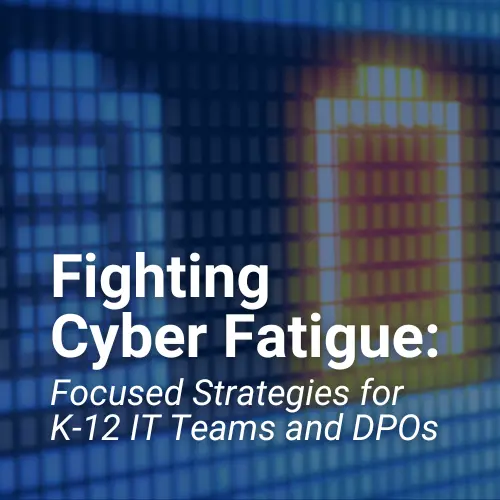As cyber adversaries evolve, so must our defense strategies. This necessitates a deep understanding of the nuances between various endpoint security solutions: Endpoint Detection and Response (EDR), Managed Endpoint Detection and Response (managed-EDR), and Managed Detection and Response (MDR).
EDR serves as the cornerstone, offering organizations the tools to safeguard their endpoints internally. However, the evolution of cyber threats demands a more proactive approach. Managed-EDR steps in, providing outsourced expertise to fortify endpoint defenses. Meanwhile, MDR transcends the confines of traditional EDR by offering holistic cybersecurity coverage across an organization’s entire IT environment.
Organizations must understand the differences between these cybersecurity solutions to make informed and effective security choices.
Let’s examine the differences between EDR, managed-EDR, and MDR solutions.
Endpoint Detection and Response (EDR)
EDR solutions are software tools or platforms that organizations procure and deploy internally within their IT infrastructure. These solutions typically consist of endpoint agents installed on individual devices, such as desktops, laptops, servers, etc. The agents continuously monitor endpoint activities and collect telemetry data, including process executions, file modifications, network connections, and user behaviors. EDR solutions offer organizations the capability to detect and respond to security threats and incidents at the endpoint level.
Key Characteristics of EDR Solutions
- Internal Management: Organizations are responsible for managing and maintaining EDR solutions internally. This approach includes deploying agents, configuring policies, monitoring alerts, and responding to security incidents.
- Customization: EDR solutions often provide flexibility for organizations to customize detection rules, policies, and response actions based on their specific security requirements and preferences.
- Resource Intensive: Implementing and managing EDR solutions requires dedicated resources, including IT personnel with cybersecurity expertise, to configure, monitor, and respond to alerts effectively.
Managed Endpoint Detection and Response (Managed-EDR)
Managed Endpoint Detection and Response (Managed-EDR) solutions are outsourced services provided by third-party cybersecurity vendors or Managed Security Service Providers (MSSPs). These vendors offer comprehensive monitoring, detection, and response capabilities for endpoints, leveraging EDR technology.
Key Characteristics of Managed-EDR Solutions:
- Outsourced Management: With managed-EDR solutions, organizations delegate the management and operation of their EDR capabilities to external experts. The service provider is responsible for deploying and managing endpoint agents, configuring policies, monitoring alerts, and responding to security incidents on behalf of the organization.
- Expertise and Support: Managed-EDR solutions provide access to cybersecurity experts who specialize in threat detection and response. Only alerts generated by the EDR vendor are managed.
- Flexibility: Managed EDR solutions offer flexibility, allowing organizations to adapt to changing security requirements and environments. The provider can tailor the service to meet each organization’s specific needs, ensuring optimal protection against emerging threats.
Managed Detection and Response (MDR)
Managed Detection and Response (MDR) solutions encompass broader monitoring, detection, and response capabilities across an organization’s entire IT environment. By going beyond endpoint-centric approaches like EDR, MDR provides a holistic view of the organization’s security posture and attack surface.
Key Characteristics of Managed Detection and Response (MDR) Solutions:
- Comprehensive Visibility: MDR solutions provide organizations with comprehensive visibility into their entire IT ecosystem. This includes endpoints, network traffic, logs, and other telemetry data sources. By correlating information from multiple sources, MDR solutions can detect complex threats and security incidents that span across different parts of the infrastructure.
- Advanced Tradecraft Protection: MDR’s approach to tradecraft protection involves using a combination of threat intelligence on both known and emerging threats, as well as attacker methods and techniques. This is further strengthened by machine learning and human analysis to create rules and algorithms that can effectively identify patterns and behaviors that are commonly associated with malicious activity. As a result, MDR has the unique ability to detect tradecraft activity, such as live-off-the-land techniques and lateral spread, which can bypass security defenses like EDR. This is because such malicious activities often masquerade as legitimate activities, making them difficult to detect by tools like EDR, which are primarily focused on detecting and stopping malware. With MDR, even the most advanced threats can be detected and responded to, preventing breaches that are often missed by other security tools and solutions.
- Proactive Threat Hunting: MDR providers employ skilled security analysts who actively hunt for threats within the organization’s environment. These analysts leverage threat intelligence, advanced analytics, and their expertise to identify indicators of compromise (IOCs) and potential security gaps before they manifest into full-blown attacks.
- Real-Time Response: In addition to threat detection, MDR services offer expert, real-time incident response capabilities. When a security incident occurs, MDR analysts leverage their knowledge and experience to triage, investigate, and respond effectively. This may involve isolating affected systems, containing the breach, and restoring normal operations.
EDR vs. Managed-EDR vs. MDR
In summary, both EDR and managed-EDR solutions focus strictly on endpoint security. The solutions differ depending on whether they are managed internally or outsourced. Meanwhile, MDR solutions offer comprehensive cybersecurity coverage across an organization’s entire IT environment. Coverage includes endpoints, networks, applications, and cloud infrastructure, with proactive threat hunting, tradecraft protection, and expert incident response capabilities.
The choice between EDR, Managed, and MDR solutions depends on factors such as organizational resources, expertise, and the desired level of security coverage and management.
A Closer Look at Managed-EDR vs. MDR
For organizations interested in outsourcing endpoint security functions, it’s necessary to understand the difference between Managed-EDR and MDR services due to several key factors that significantly impact their cybersecurity posture and operational efficiency:
Scope of Coverage
- Managed-EDR services primarily focus on endpoint security, offering monitoring, detection, and response capabilities specifically for individual devices within the organization’s network.
- MDR services, on the other hand, provide a broader approach to cybersecurity, covering not only endpoints but also networks, applications, and cloud environments.
Scope of Capabilities
- Managed EDR services are effective at detecting and stopping many types of malware attacks because they typically rely on known signatures or behavioral patterns associated with malicious software. However, they face challenges when it comes to detecting and stopping more sophisticated, tradecraft-driven attacks.
- MDR services, on the other hand, fill in the gap between detecting malware and tradecraft-driven attacks. They do this by utilizing data from threat intel feeds, network traffic analysis, user behavior analytics, and manual threat hunting by skilled cyber professionals to provide the additional context needed to recognize advanced attacks in their early stages.
Client Experience and Engagement Model
- Managed-EDR services involve outsourcing the management of endpoint security to a third-party provider. The client primarily interacts with the service provider regarding endpoint-related matters.
- MDR services foster a collaborative partnership between the client and the service provider. As a result, the provider’s cybersecurity experts act as an extension of the client’s team. The client engages in strategic discussions, receives regular updates on security events, and participates in joint decision-making.
Tailored Protection vs. Holistic Security Management
- Clients of managed-EDR services can expect tailored endpoint protection based on their specific requirements and risk profiles. The service provider configures and deploys endpoint agents, customizes detection rules, and fine-tunes policies to align with the organization’s security objectives.
- MDR services offer end-to-end threat management, proactive threat hunting, and comprehensive security coverage across the organization’s entire IT infrastructure. The client receives insights into potential threats and vulnerabilities across various layers of the infrastructure.
Alert Management and Incident Response
- Managed-EDR services handle the monitoring of endpoint telemetry data, analysis of security alerts, and response to potential threats or incidents specific to endpoints. The service provider alerts the client about suspicious activities and may offer guidance for response actions.
- MDR services provide expert, real-time incident response capabilities across the entire IT environment. The service provider orchestrates incident response efforts, collaborates with the client in decision-making, and ensures effective containment and remediation of security incidents.
Continuous Improvement and Optimization
- Managed-EDR services focus on endpoint security management and may offer ongoing support for adapting to evolving threats. However, the scope of improvement is limited to endpoint-related aspects.
- MDR services emphasize continuous improvement and optimization of the organization’s overall security posture. The provider conducts regular reviews, assesses the effectiveness of controls, and recommends enhancements to strengthen all facets of an environment.
Choosing The Right Service Model
Understanding the differences between managed-EDR and true MDR services is crucial for buyers. It helps organizations align cybersecurity investments with their specific needs, resources, and desired level of security coverage and management. Choosing the suitable service model can improve cybersecurity, mitigate risks, and ensure operational resilience against evolving cyber threats.
If you’re considering outsourcing this type of advanced security, you may want to consider partnering with a company like M.A. Polce for MDR services. This will give you the ability to combat sophisticated, tradecraft-driven threats. Additionally, you will have a close relationship with the people managing the tool for you.
M.A. Polce’s MDR services combine managed-EDR capabilities with real-time active response, cloud protection, tradecraft and malware protections, and attack service reduction. These services address the gaps left by standalone managed-EDR services and help us maintain a holistic view of the activity occurring not only at endpoints but throughout our clients’ entire IT environment. We work closely with clients to become intimately familiar with their environment, which ultimately fuels the strength of our expert human analysis. This partnership allows us to offer benefits that are often not afforded by large providers.



